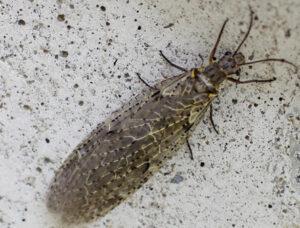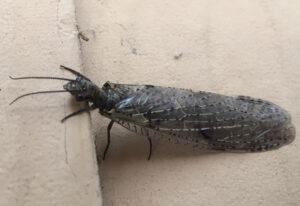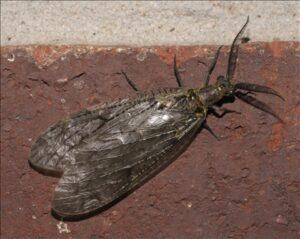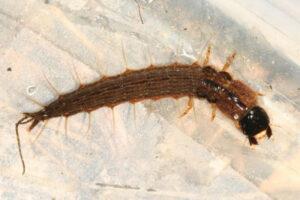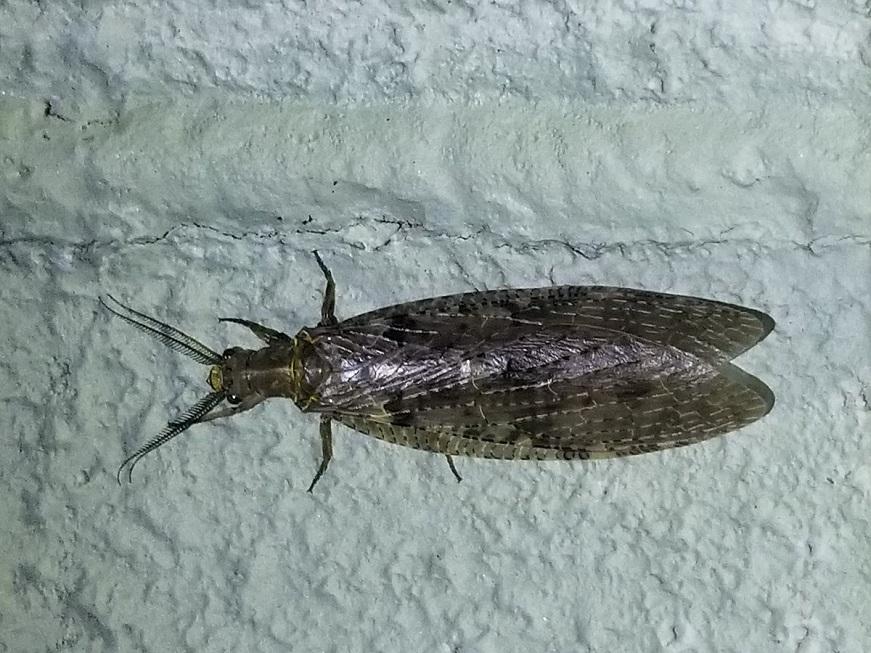Spring Fishfly (Chauliodes rastricornis)
Updated on
17/11/2022The spring fishfly is a species of North American fishfly. As implied by its name, it flies late in spring, from late May to early July. It is a big, primitive-looking, short-lived, winged insect. It is also known as the toothed-horned fishfly and is lighter and less yellow than the summer fishfly.
Scientific Classification
- Class:Insecta
- Order:Megaloptera
- Family:Corydalidae
- Genus:Chauliodes
- Species:C. rastricornis
Conservation Status
Description
The spring fishflies are brownish gray of size 1.4-2 inches (35-55 mm). Their wingspan is 2.5-3.13 inches (63-80 mm). The head and pronotum have dark markings against a light brown background. The multi-segmented antennae are dark brownish-gray. The female antennae are notched at the edge like a saw, while that of the males are comb-like. There are two big compound eyes at the sides of the head and 3 simple eyes in a triangle on top of the head. The jaws are shorter than the head.
Distribution: The US and southern Canada, east of the Great Plains. It is common in Minnesota and subtropical Florida
Habitat: Near calm waterbodies with detritus.
Do They Bite/Sting: No.
Lifespan: 1-5 years.
Predators: No natural predators.
Behavior and Characteristics
Diet
The omnivorous larvae feed on algae, and small invertebrates, including clams, crustaceans, worms, and other insects. The adults don’t feed.
Life Cycle
The summer fishfly undergoes complete metamorphosis.
1. Egg Stage
Large masses of 200-3000 eggs are laid near still water bodies.
2. Larva Stage
The larvae stay in the water and take 1-5 years to mature. Then it crawls onto land and pupates in moist soil under a rock or log.
2. Pupa Stage
This stage lasts a couple of weeks.
3. Adult Stage
The adults emerge in spring and live for only a few days to a week. They hide during the day and are active at dusk.
Source
whatsthatbug.com, xpda.com, a4.pbase.com




